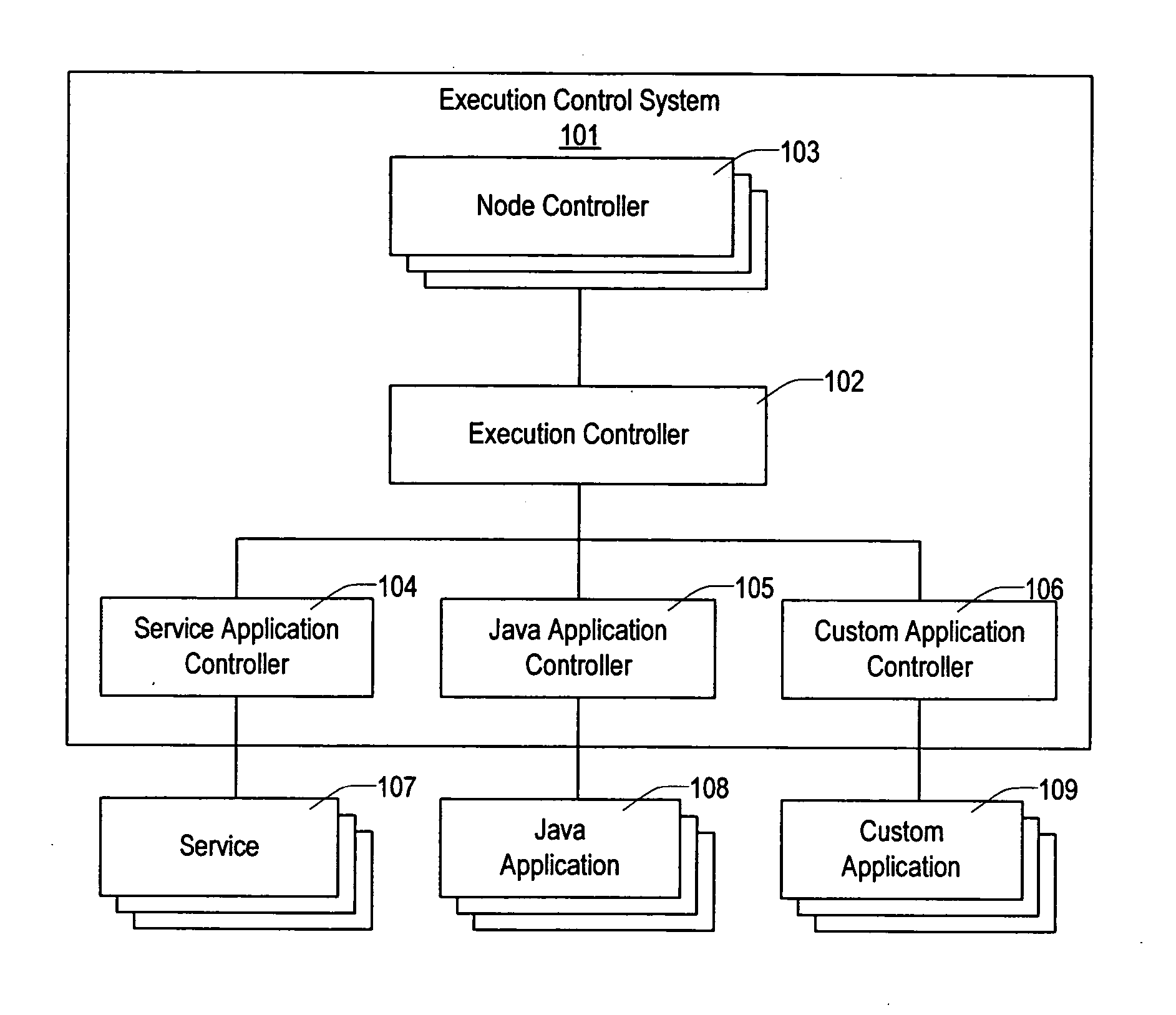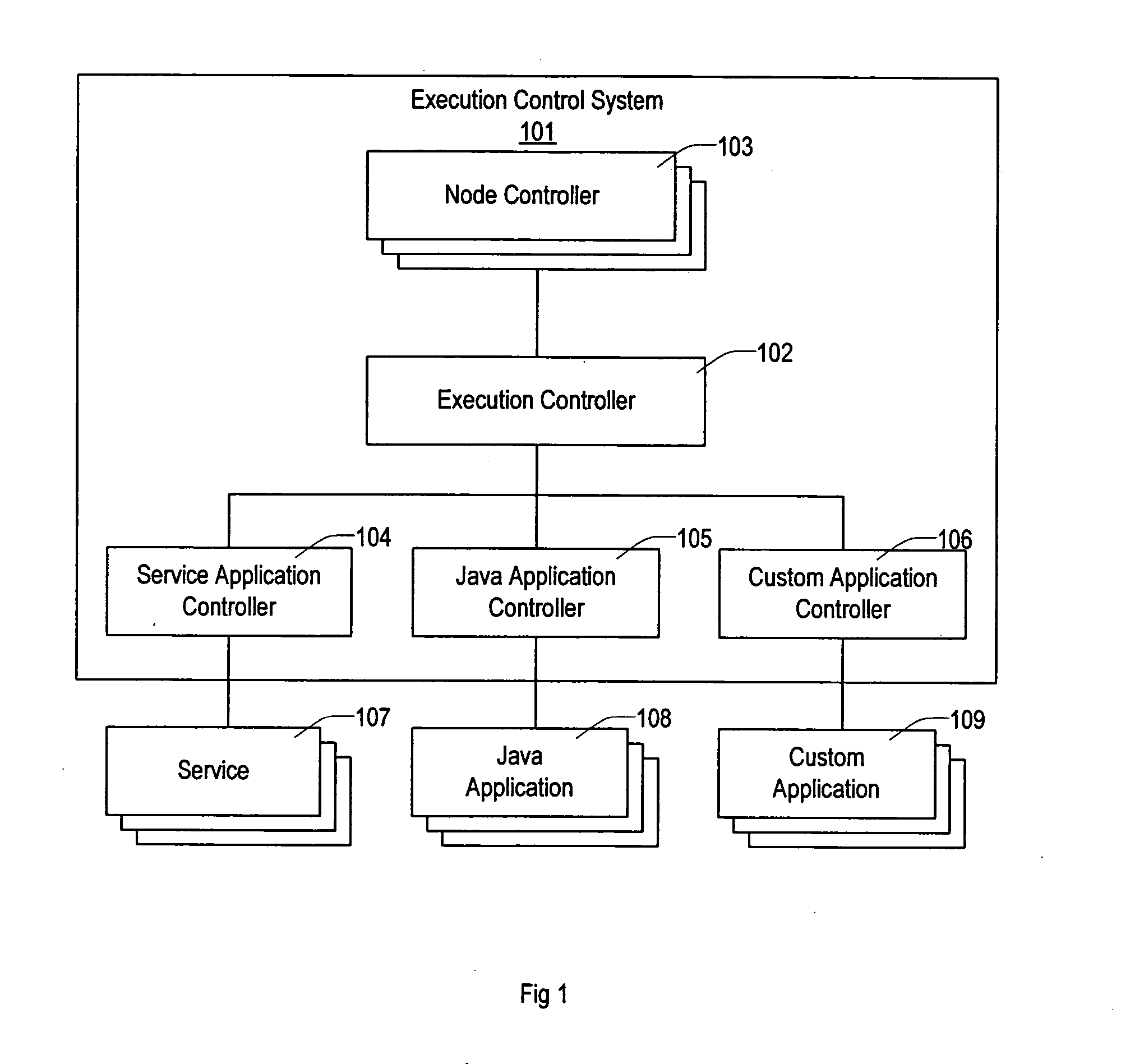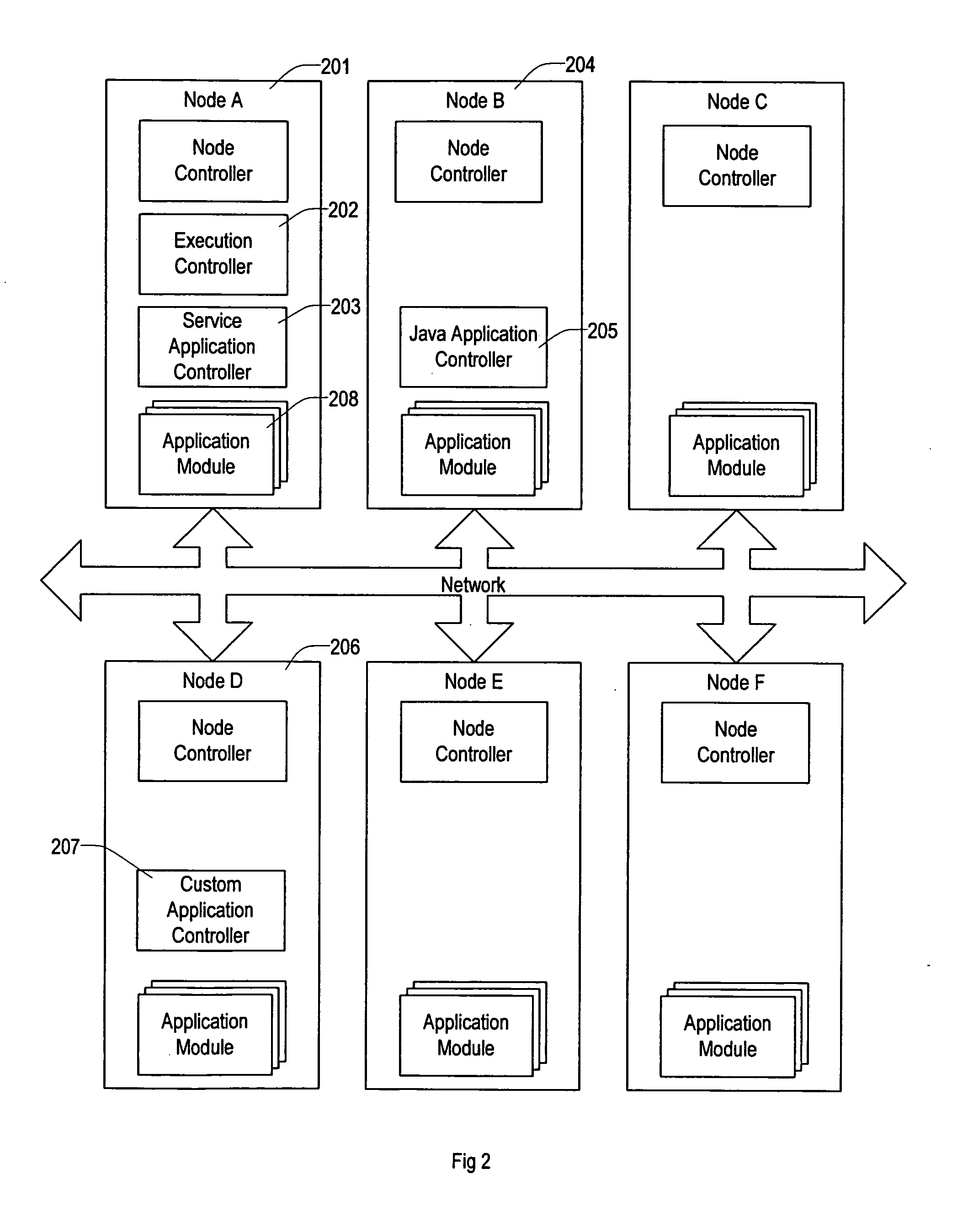Method and apparatus for executing applications on a distributed computer system
a distributed computer system and application programming technology, applied in the direction of program control, instruments, error detection/correction, etc., can solve the problems of inability to adopt the platform by application developers, lack of features required in other application domains, and inconvenient management of distributed applications, etc., to achieve convenient management, simplify the administration of distributed applications, and improve the effect of application development efficiency
- Summary
- Abstract
- Description
- Claims
- Application Information
AI Technical Summary
Benefits of technology
Problems solved by technology
Method used
Image
Examples
Embodiment Construction
[0078] An execution control system for a distributed computer system consistent with the present invention can support more types of applications than systems using conventional designs by associating applications of the same type with an application controller that includes the control operations specific to the application type. The execution control system includes an execution controller, one or more node controllers, and one or more application controllers. Each node controller is associated with a node and has the capability to start and stop processes on the node. The execution controller maintains the information about the distributed computer system including the knowledge of the nodes that are present in the distributed computer system, the processes executing on all the nodes, the node groups defined in the distributed computer system, and the application controllers present in the system. An application controller implements the application execution model for a particul...
PUM
 Login to View More
Login to View More Abstract
Description
Claims
Application Information
 Login to View More
Login to View More - R&D
- Intellectual Property
- Life Sciences
- Materials
- Tech Scout
- Unparalleled Data Quality
- Higher Quality Content
- 60% Fewer Hallucinations
Browse by: Latest US Patents, China's latest patents, Technical Efficacy Thesaurus, Application Domain, Technology Topic, Popular Technical Reports.
© 2025 PatSnap. All rights reserved.Legal|Privacy policy|Modern Slavery Act Transparency Statement|Sitemap|About US| Contact US: help@patsnap.com



